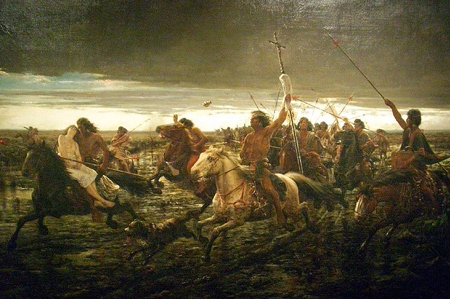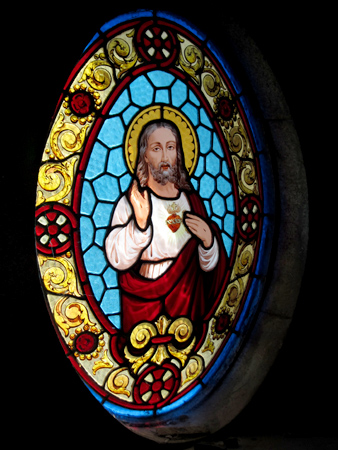
Documenting Recoleta Cemetery in Buenos Aires since 2007
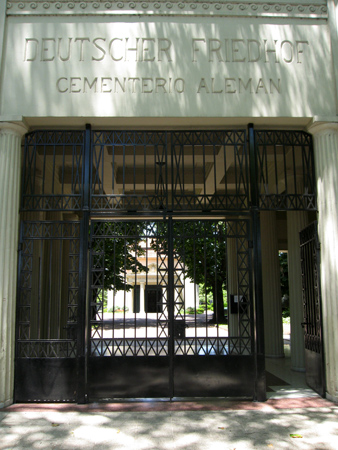
The Cementerio Alemán opened along with its neighbor, the British Cemetery, in 1892. German Protestants had the same difficulty as other non-Catholic immigrant groups in finding a suitable place for burials. Hungarian architect Juan Kronfuss designed the entrance in 1926, & the chapel contains extraordinary stained glass windows from Franz Mayer in Munich. The greenery & perfectly manicured plots make for a nice break from the hectic vibe of Chacarita.
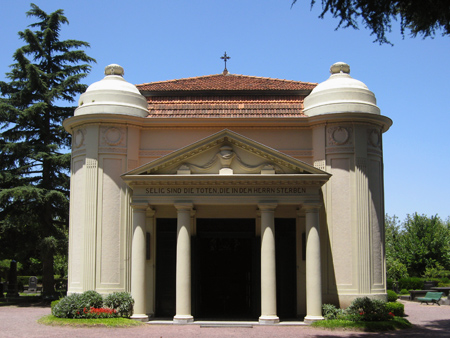

One of its most famous graves belongs to Capt. Hans Wilhelm Langsdorff, commander of the armored vessel Admiral Graf Spee. Damaged in the 1939 Battle of the River Plate off the coast of Montevideo, Langsdorff scuttled the ship & his crew were taken prisoner. Transferred to Buenos Aires, Langsdorff committed suicide two days later. Some of the crew passed away—waiting out the end of the war in either Argentina or Uruguay—& are also buried here.
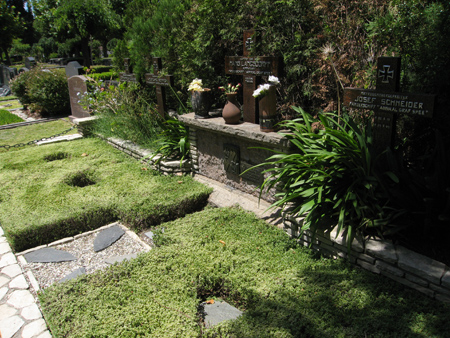
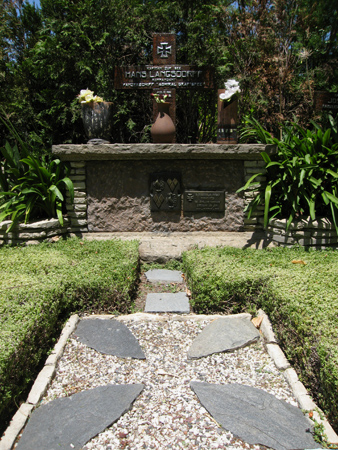
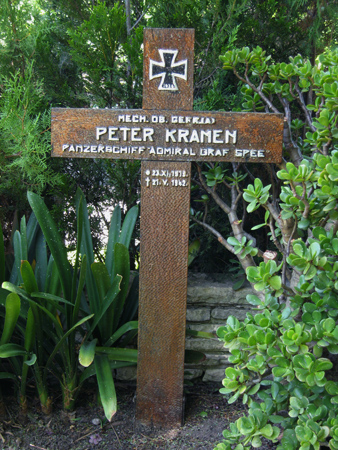
The crew of the Graf Spee are not the only Nazis interred there. Rodolfo Freude formed part of Perón’s secret service & is thought to have been one of the organizers behind ODESSA. He died in 2003, & the full story of bringing Nazis & Nazi wealth into Argentina may have died with him.
Other notable figures: Swimmer Jeanette Campbell was the first Argentine to win an Olympic medal… ironically at the 1936 Berlin games. Photographer Annemarie Heinrich took some of the most well-known portraits of celebrities & politicians, including my favorite images of Tita Merello & Eva Perón:
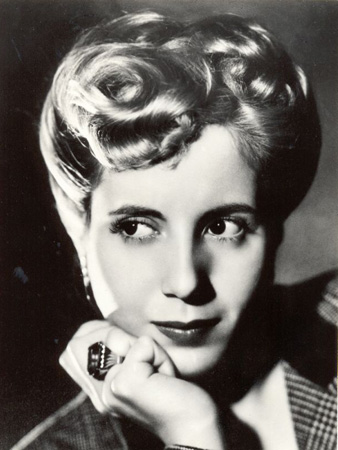
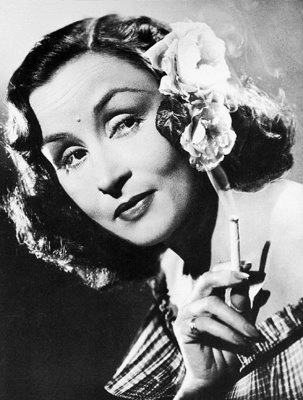
Architect Carlos (Karl) Nordmann designed the Legislature of the city of La Plata, along with its museum & other fine works throughout the country.
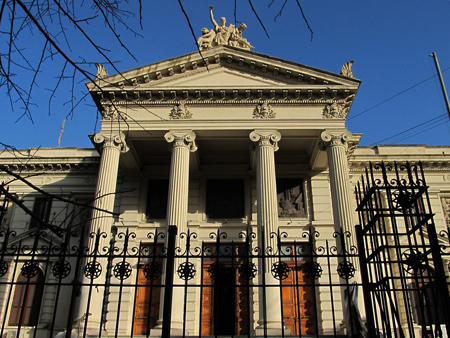

Alexander Asboth, a Hungarian immigrant to the USA, commanded Union troops during the Civil War. He later became US ambassador to Argentina & Uruguay, dying in Buenos Aires. Asboth was initially buried in the Cementerio Alemán, but his remains were transferred to Arlington National Cemetery in 1990. The original tombstone can be found by the entrance:
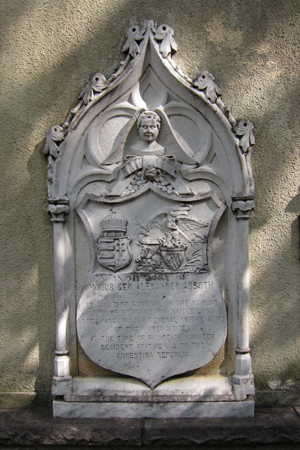
A few other pics… there are some fantastic works of art, mostly near the entrance:
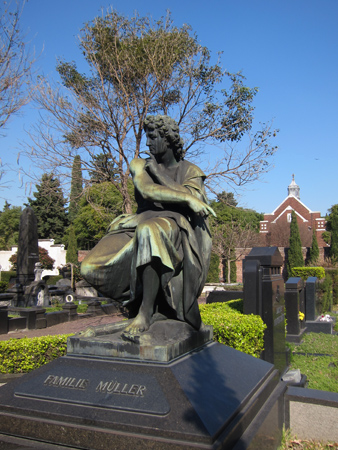
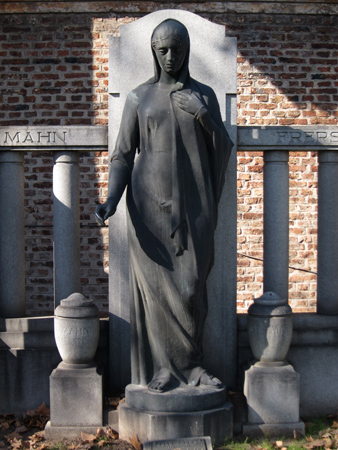
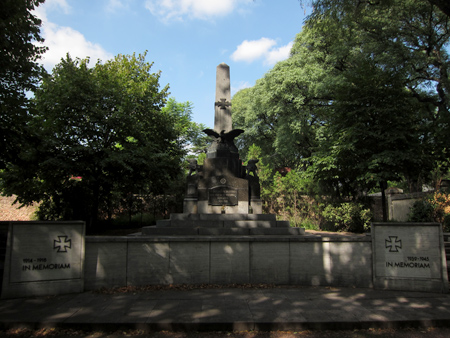
Although sharing the same gigantic plot of land as Chacarita Cemetery, walls separate the Cementerio Alemán from Chacarita. The only entrance is along Avenida El Cano, near the intersection of Avenida del Campo.
—————————————————
Other Buenos Aires cemeteries: Cementerio del Sur • Chacarita • San José de Flores • Cementerio de los Disidentes • Cementerio Británico • Cementerio Alemán
Photo of the Legislatura in La Plata by Marcelo Metayer.
Leave a Comment
While sculptor Julio César Vergottini has several important works in Chacarita —like statues of tango legend Celedonio Flores & of poetess Alfonsina Storni— his works are rare in Recoleta Cemetery.
One possible reason Vergottini is not so present in Recoleta could be that his typical clients were not the upper-class families who had works of art commissioned in Europe. This plaque decorates the Durañona family vault, but they seem like the typical Recoleta Cemetery family. Hailing from San Antonio de Areco, Francisco Durañona y Vedia is currently the head of the National Insurance Board… appointed by CFK herself. Perhaps the family just liked Vergottini’s work.
Vergottini lived in a mini-castle on the banks of the contaminated Riachuelo River in the barrio of Barracas, & most of his public works are in the same area. Two relief panels decorate the colorful, ultra-touristy Caminito in La Boca. Vergottini won first prize to build a monument incorporating the national flag. His work, titled “Monumento al Izamiento de la Bandera” or “Monument to Hoisting the Flag” was unveiled in Plaza Colombia in Barracas in 1940. But don’t bother to look for his statues now. When the city government refit Plaza Colombia in 2010, they removed them from the base of the flagpole. Supposedly they are being kept in a warehouse until money is available for their restoration… let’s hope they reappear sometime soon!
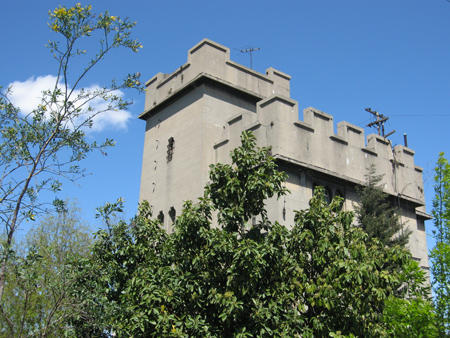
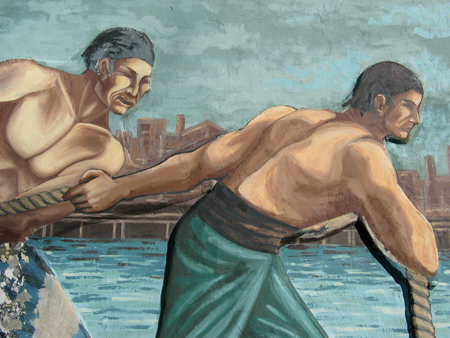
Update (22 Jun 2012): The Vergottini statues have been found! And of course they are in a deplorable state. Someone recently took a photo of the statues discarded in a Department of Monuments & Artworks parking lot in Parque 3 de Febrero (Palermo). More info here in Spanish..sep. such an embarrassment for the city government:
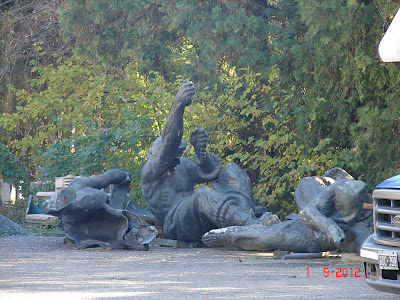
Update (Sep 2019): The statues have returned to Plaza Colombia almost nine years after being removed. At last!
Last photo courtesy of Proteger Barracas.
Leave a Comment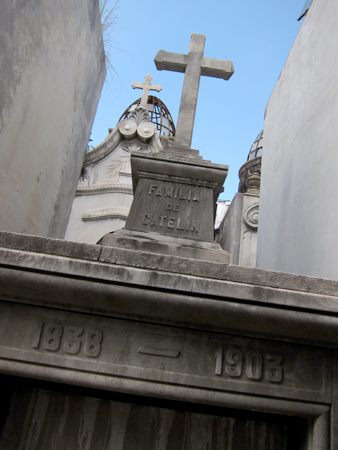
Prosper Catelin, often referred to by the Spanish version of his name—Próspero—was born in France in 1764. After immigrating to Argentina, his technical skill modernized the city of Buenos Aires. Catelin directed the Department of Engineers/Architects during the presidency of Bernadino Rivadavia in the 1820’s & worked alongside some of the early greats of Argentine architecture, most notably Pedro Benoit.
Some of Catelin’s works survive today, even though they are almost 200 years old. The recently restored Sala de Representantes for the local government sits inside the Manzana de la Luces in downtown Buenos Aires:

Working with Benoit, Catelin designed the façade of the Catedral Metropolitana on Plaza de Mayo. Complete construction of the cathedral would take some 300 years, & the façade & its freize were final touches. Strikingly Neoclassical, it is said to have been inspired by the Palais Bourbon or the Madeleine in Paris… structures that were surely familiar to Benoit & Catelin:
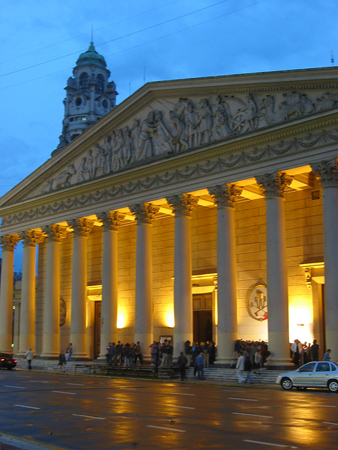
Most relevant for this blog is that Catelin designed the initial layout of Recoleta Cemetery when it opened in 1822. Remember that the cemetery’s early appearance was quite different from its look today, with much more greenery & several dirt paths to stroll through the gated plots:
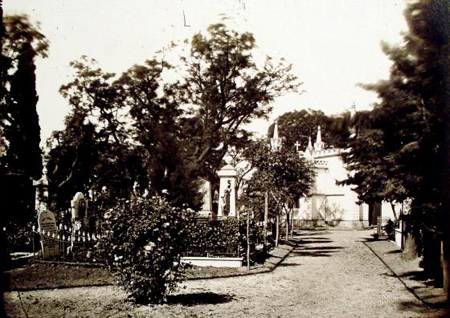
The dates on the Catelin tomb are difficult to understand: 1838—1903. Prosper lived from 1764 to 1842. His wife likely had similar dates & their only son lived from 1826 to 1870. Not sure what they mean… if a descendant reads this, we’d like to know!
Final image is Photo #347 from the Colección Witcomb: dozens of Buenos Aires photographs taken at the end of the 19th & beginning of the 20th century.
2 Comments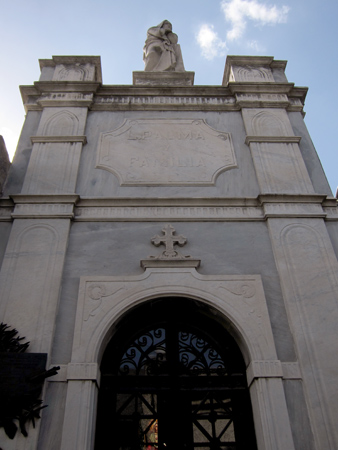
The Palma family owned large amounts of land near the town of Carlos Tejedor in the Province of Buenos Aires. And while important enough in their own right, when well-known artist Ángel della Valle married into the family he certainly increased their status.
Born in Buenos Aires in 1855 to a family of Italian immigrants, della Valle showed an early aptitude for art. At the age of 20, he was sent to Florence to study then returned to Buenos Aires to paint & teach. Forming the Sociedad de Estímulo de Bellas Artes in the building Galerías Pacíficos now occupies, Della Valle influenced the next generation of artists & became friends with contempories such as Eduardo Sivori & Lucio Correa Morales.
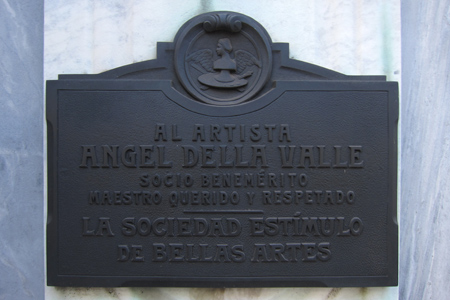
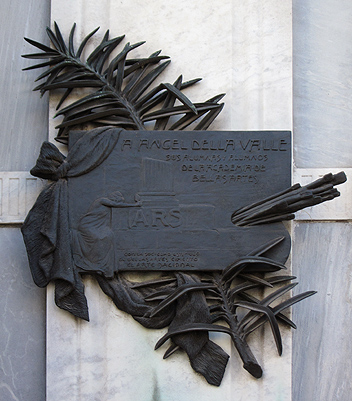
Sadly enough, Della Valle suffered a heart attack in 1903… while teaching class. And unfortunately for us, most of his work is in private collections today. His style has obvious Impressionist influences with a color palette similar to Spanish painter Joaquín Sorolla. Favorite subjects for Della Valle included landscapes, gauchos & the occasional portrait. Some works have recently sold for USD $45,000.
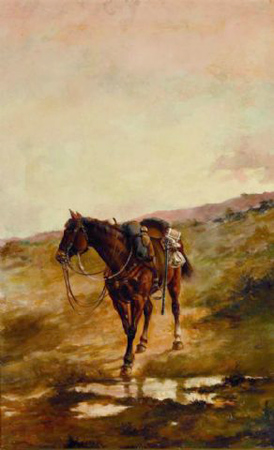
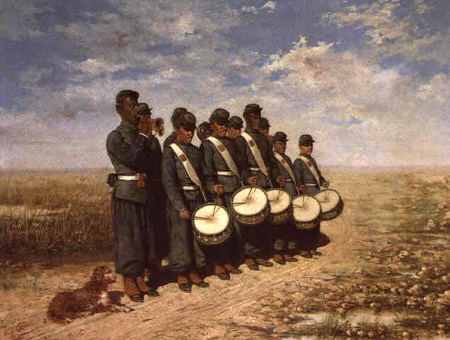
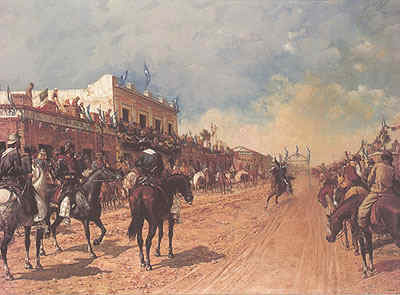
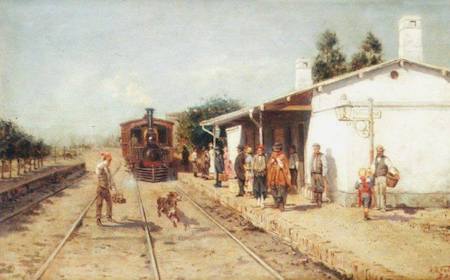
At least art lovers can visit his most famous work, “La Vuelta del Malón,” at the Museo de Bellas Artes in Buenos Aires. Painted in 1892, it seemed to justify the recent Conquista del Desierto as an indigenous warrior tribe carries away a white woman. Racial stereotypes aside, the colors, composition & technique are fascinating… probably why this piece was chosen to be displayed at the 1893 Columbian Expo in Chicago.
